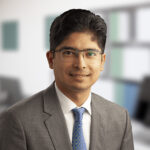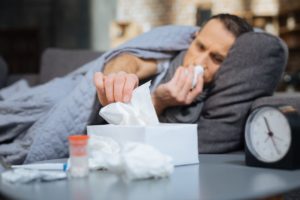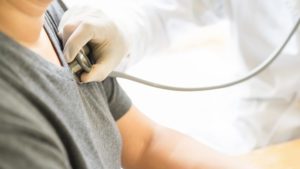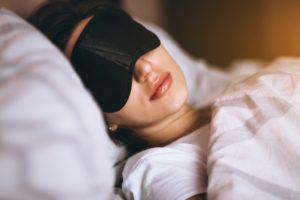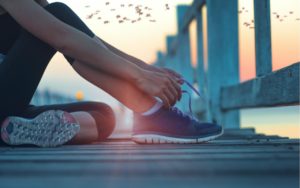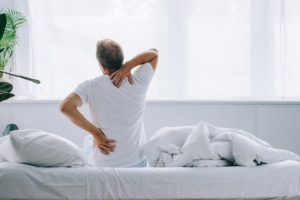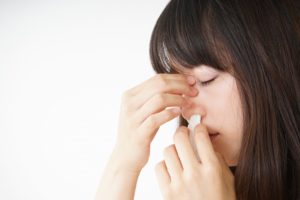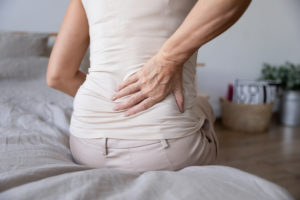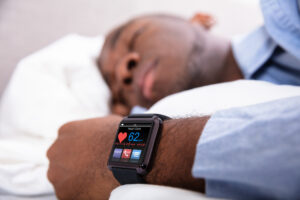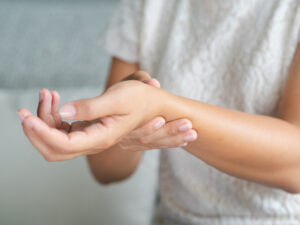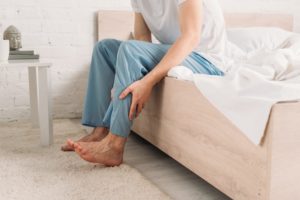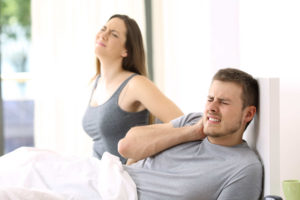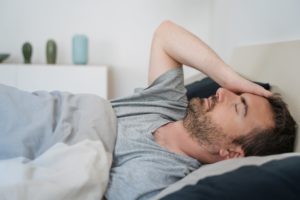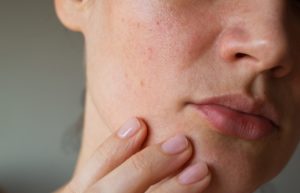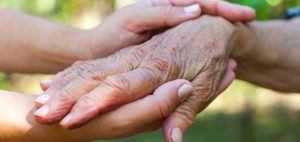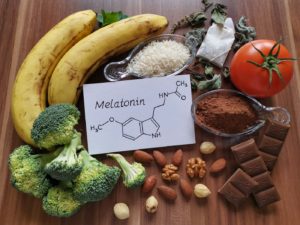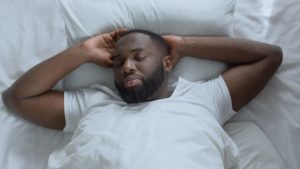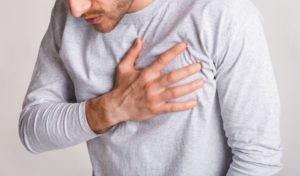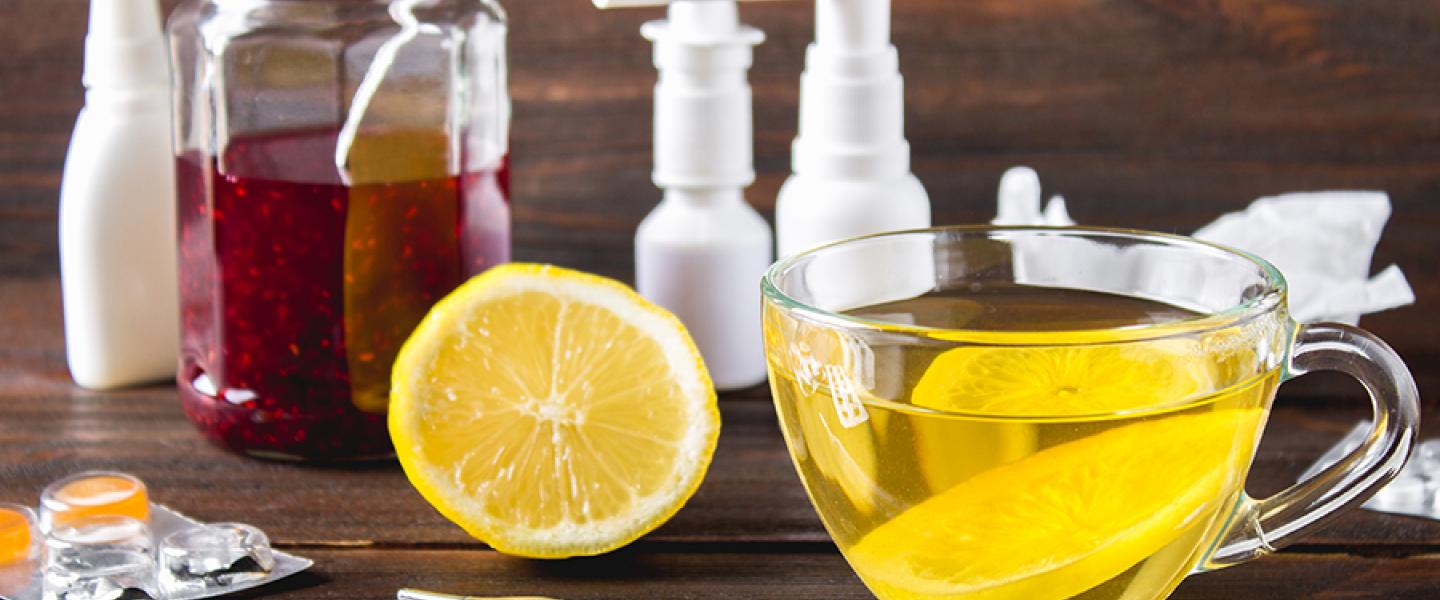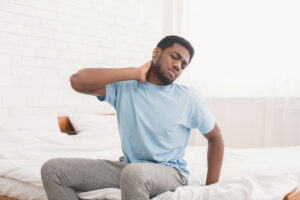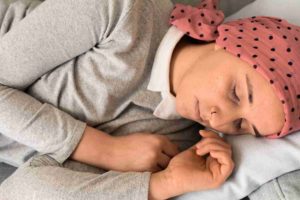Rest and Recovery: How to Sleep With Intercostal Muscle Strain
- Intercostal muscle strain can be caused by repetitive movements or injuries to the torso.
- Relieve muscle pain with rest, ice and heat therapy, and pain medications.
- Sleeping with intercostal muscle strain requires proper positioning to keep your upper body aligned and supported.
- While lying down, use a pillow to relieve pressure from the injured area and practice deep breathing.
- If you experience breathing difficulties or pain during sleep, consult with a healthcare professional for guidance.
When you are recuperating from an injury, such as intercostal muscle strain, sleep is an important component of the recovery process. As you sleep, your body repairs tissues and cells . Developing strategies for falling asleep and staying asleep despite pain from the injury can help you recover.
Is Your Troubled Sleep a Health Risk?
A variety of issues can cause problems sleeping. Answer three questions to understand if it’s a concern you should worry about.
What is Intercostal Muscle Strain?
Intercostal muscle strains are muscle tears in the intercostal muscles. These types of strains are a common cause of musculoskeletal chest pain .
Your intercostal muscles are located in between your ribs, and they help you breathe during physical activity . The external intercostal muscles contract to raise your ribs when you inhale. The internal intercostal muscles contract when you forcibly exhale.
Causes of Intercostal Muscle Strain
Strains are a common soft-tissue injury in sports . Intercostal muscles can sustain a strain from sports that require intense upper body effort.
For example, both batting and pitching in baseball and softball twist the upper body. A study examining 20 years of baseball injuries found that over 90% of recorded muscle strains involved either the intercostal muscles or the internal/external oblique muscles in the abdomen. Other common sports that cause intercostal muscle strain include weight lifting and rowing.
Intercostal muscles can also be strained from one-time injuries or from repetitive movements, such as coughing, painting a ceiling, or chopping wood.
Symptoms of Intercostal Muscle Strain
If you have strained your intercostal muscles, you may experience a number of symptoms:
- Localized Pain: The pain may worsen when you use your intercostal muscles, such as when you take a deep breath or cough.
- Tenderness: The affected area is typically sensitive to touch.
- Swelling: Swelling may occur in some cases of muscle strain, but it may take several hours to appear.
- Muscle Spasms: Some injuries can cause the muscles to involuntarily contract or spasm.
Diagnosis of Intercostal Muscle Strain
If you experience pain in the ribs, it is important to get a proper diagnosis from a healthcare professional. A healthcare provider typically diagnoses intercostal muscle strain by first asking questions about how the injury happened, and whether you have had similar injuries in the past.
They also perform a physical exam, which includes feeling the affected area for tenderness. Often the questioning and exam are sufficient for diagnosis. However, in some cases your doctor may order x-rays or magnetic resonance imaging (MRI) tests to check for other injuries, such as fractures or swelling.
Muscle strains can be classified into one of three categories:
- First Degree (Mild): Muscle fibers are stretched and a few may be torn.
- Second Degree (Moderate): A significant number of muscle fibers are torn.
- Third Degree (Severe): All muscle fibers are torn.
Second- and third-degree strains require more time to heal.
Treatment for Intercostal Muscle Strain
After addressing potentially serious injuries, your doctor may recommend one or more of the following treatments:
- Rest: It is especially important to avoid movements that cause the pain to reoccur. For athletes, this may require time away from practice and competition or limited movements to avoid reinjury. Your treatment provider can work with you to gradually strengthen your muscles and work on regaining range of motion.
- Ice: In the days immediately following the injury, you may be able to reduce swelling by applying an ice pack wrapped in a towel for 15 to 20 minutes at intervals throughout the day.
- Heat Therapy: After the first few days have passed, you can switch from using an ice pack to using a heating pad to treat the strain. Heating the injured muscles may help relieve pain and speed up the recovery process.
- Pain Relievers: Some medications can reduce the amount of pain you experience from the strain. Talk to your doctor about which medications are appropriate to take, as some may increase bleeding.
- Surgery: If the muscles are completely torn, you may need surgery.
The average intercostal muscle strain takes about four to five weeks to heal, but the healing process may be shorter or longer depending on the severity of the strain.

How to Sleep With Intercostal Muscle Strain
Falling asleep or staying can be a challenge. Managing your pain is a key step to better sleep and recovery from an intercostal muscle strain. There are a number of strategies you can use to relieve symptoms and get the full night of rest you need.
Talk to Your Doctor
You should inform your healthcare provider of your pain levels and sleeping difficulties so they can determine a treatment plan that is right for you. Be sure to let your doctor know what treatments you have tried or are currently using, such as heat therapy and over-the-counter pain relievers.
In more serious cases where the muscles continue to be reinjured, your healthcare provider may inject the area with corticosteroids or lidocaine. These injections can provide relief from pain.
Gentle Breathing and Stretching Exercises
Your healthcare provider may recommend stretching and breathing exercises to assist in recovery and ensure that the pain from your injury does not unduly limit your breathing capacity.
Research also shows that deep breathing may help reduce pain and stress , so these exercises may also be helpful as part of a bedtime routine. Proceed cautiously and consult your healthcare provider if the pain worsens.
Meditation Exercises to Reduce Pain
Preliminary research suggests that mindfulness meditation may help improve pain and promote physical relaxation . While there are many different forms of meditation, they usually include the following components:
- Sitting in a comfortable position
- Meditating a quiet space
- Focusing attention on breathing, an object, or selected words
- Maintaining an open attitude, or a mindset of letting distractions come and go without judgment
Keep Your Torso Neutral and Minimize External Pressure
If you struggle to fall asleep because of pain from an intercostal muscle strain, consider changing your . The ideal sleep position should keep the spine properly aligned, with the torso in a neutral position that protects against unwanted twisting or added weight on the injury. If you sleep on your side, you may feel more comfortable sleeping on the side that is not injured. You should find a comfortable mattress and the to support your head, neck, and upper body.
Especially during the first couple of days, you may find it helps to keep your upper body elevated. Try propping yourself up using pillows, or an adjustable base if you have one.
Practice Good Sleep Hygiene
Implementing healthy habits can help lay the groundwork for better sleep as you recover. Elements of good sleep hygiene include:
- Keeping a Consistent Sleep Schedule: On both weekdays and weekends, going to bed and waking up at the same time helps facilitate sound sleep.
- Creating a Bedtime Routine: Activities such as meditating, reading, or taking a warm bath can help you unwind before bed.
- Exercising During the Day: Exercise has been shown to positively impact sleep . Although you may not be able to practice your regular sport, gentle activities such as walking or yoga can keep your body moving.
- Making a Comfortable Sleeping Environment: An ideal bedroom is dark, cool, and quiet. If necessary, use sleep accessories such as an eye mask or earplugs to make the environment more conducive to sleep. You can also use blackout curtains to prevent light from entering the room, or a white noise machine to muffle background noise.
- Avoiding Electronics Before Bedtime: Cell phones, computers, TVs, and gaming devices all emit bright light that can make falling asleep difficult.
- Limiting Use of Your Bed to Sex and Sleep: To help your brain form a connection between your bed and sleep, avoid lying in bed for longer than 20 minutes if you are unable to sleep. Instead, go do a relaxing activity in another room and come back to bed when you feel sleepy.
If you are still struggling to fall asleep or stay asleep, talk to your healthcare provider. They can help identify if there is an underlying sleep disorder that is negatively impacting your ability to get a full night’s sleep.

Still have questions? Ask our community!
Join our Sleep Care Community — a trusted hub of sleep health professionals, product specialists, and people just like you. Whether you need expert sleep advice for your insomnia or you’re searching for the perfect mattress, we’ve got you covered. Get personalized guidance from the experts who know sleep best.
References
15 Sources
-
MedlinePlus: National Library of Medicine (US). (2014, April 14). Healthy Sleep., Retrieved August 26, 2021, from
https://medlineplus.gov/healthysleep.html -
Campagne, D. (2021, March). Overview of sprains and other soft-tissue injuries. Merck Manual Professional Version., Retrieved August 26, 2021, from
https://www.merckmanuals.com/professional/injuries-poisoning/sprains-and-other-soft-tissue-injuries/overview-of-sprains-and-other-soft-tissue-injuries -
Ayloo, A., Cvengros, T., & Marella, S. (2013). Evaluation and treatment of musculoskeletal chest pain. Primary Care: Clinics in Office Practice, 40(4), 863–887.
https://pubmed.ncbi.nlm.nih.gov/24209723/ -
National Heart, Lung, and Blood Institute. (2020, October 6). How the lungs work. U.S. Department of Health and Human Services, National Institutes of Health., Retrieved August 26, 2021, from
https://www.nhlbi.nih.gov/health-topics/how-lungs-work -
National Cancer Institute SEER Training Modules. Muscles of the Trunk. U.S. Department of Health and Human Services, National Institutes of Health., Retrieved August 26, 2021, from
https://training.seer.cancer.gov/anatomy/muscular/groups/trunk.html -
Campagne, D. (2021, March). Overview of sprains and other soft-tissue injuries. Merck Manual Consumer Version., Retrieved August 26, 2021, from
https://www.merckmanuals.com/home/injuries-and-poisoning/sprains-and-other-soft-tissue-injuries/overview-of-sprains-and-other-soft-tissue-injuries -
Conte, S. A., Thompson, M. M., Marks, M. A., & Dines, J. S. (2012). Abdominal muscle strains in professional baseball. The American Journal of Sports Medicine, 40(3), 650–656.
https://pubmed.ncbi.nlm.nih.gov/22268233/ -
Gundersen, A., Borgstrom, H., & McInnis, K. C. (2021). Trunk injuries in athletes. Current Sports Medicine Reports, 20(3), 150–156.
https://pubmed.ncbi.nlm.nih.gov/33655996/ -
Yoo W. G. (2017). Effect of a combined thoracic and backward lifting exercise on the thoracic kyphosis angle and intercostal muscle pain. Journal of Physical Therapy Science, 29(8), 1481–1482.
https://pubmed.ncbi.nlm.nih.gov/28878487/ -
Tomas-Carus, P., Branco, J. C., Raimundo, A., Parraca, J. A., Batalha, N., & Biehl-Printes, C. (2018). Breathing exercises must be a real and effective intervention to consider in women with fibromyalgia: A pilot randomized controlled trial. The Journal of Alternative and Complementary Medicine, 24(8), 825–832.
https://pubmed.ncbi.nlm.nih.gov/29653069/ -
Hamasaki, H. (2020). Effects of diaphragmatic breathing on health: A narrative review. Medicines, 7(10), 65.
https://pubmed.ncbi.nlm.nih.gov/33076360/ -
Cherkin, D. C., Sherman, K. J., Balderson, B. H., Cook, A. J., Anderson, M. L., Hawkes, R. J., Hansen, K. E., & Turner, J. A. (2016). Effect of mindfulness-based stress reduction vs cognitive behavioral therapy or usual care on back pain and functional limitations in adults with chronic low back pain. JAMA, 315(12), 1240.
https://pubmed.ncbi.nlm.nih.gov/27002445/ -
National Center for Complementary and Integrative Health. (2016, April). Meditation: In depth., Retrieved August 26, 2021, from
https://www.nccih.nih.gov/health/meditation-in-depth -
Kelley, G. A., & Kelley, K. S. (2017). Exercise and sleep: A systematic review of previous meta-analyses. Journal of Evidence-Based Medicine, 10(1), 26–36.
https://pubmed.ncbi.nlm.nih.gov/28276627/ -
Hysing, M., Pallese, S., Stormark, K., Jakobsen, R., Lundervold, A. J., & Sivertsen, B. (2015). Sleep and use of electronic devices in adolescence: Results from a large population-based study. BMJ Open, 5(1), e006748.
https://pubmed.ncbi.nlm.nih.gov/25643702/

